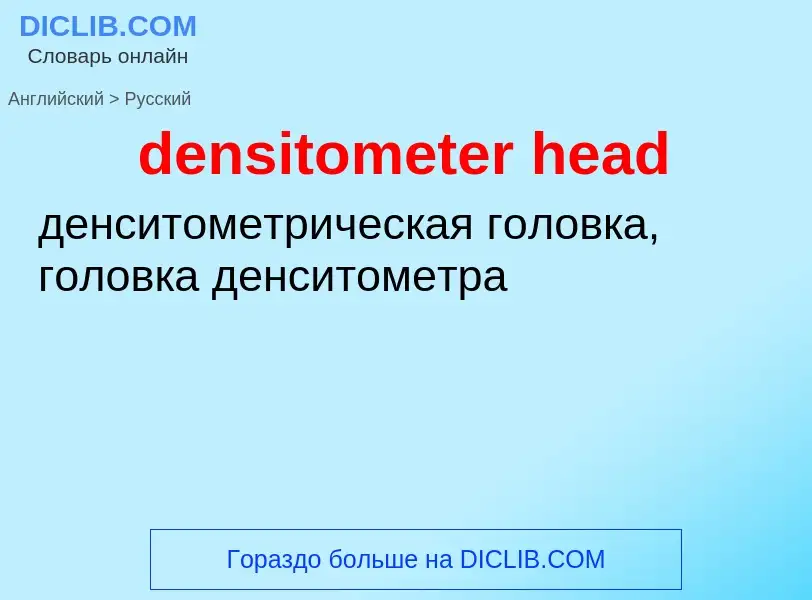Перевод и анализ слов искусственным интеллектом ChatGPT
На этой странице Вы можете получить подробный анализ слова или словосочетания, произведенный с помощью лучшей на сегодняшний день технологии искусственного интеллекта:
- как употребляется слово
- частота употребления
- используется оно чаще в устной или письменной речи
- варианты перевода слова
- примеры употребления (несколько фраз с переводом)
- этимология
densitometer head - перевод на русский
медицина
окружность головы
[hed'redʒistə]
музыка
головной регистр
['hedtəun]
синоним
['hedvɔis]
музыка
головной голос или регистр
физика
высота пьезометрическая
скоростной напор
строительное дело
статический напор
нефтегазовая промышленность
величина напора
высота нагнетания (насоса)
гидростатический напор
гидростатическое давление
строительное дело
подбабок, наголовник
нефтегазовая промышленность
забивная головка (для обсадных труб)
вращатель шпиндельного станка
вращатель роторного станка
Определение
Википедия
In linguistics, head directionality is a proposed parameter that classifies languages according to whether they are head-initial (the head of a phrase precedes its complements) or head-final (the head follows its complements). The head is the element that determines the category of a phrase: for example, in a verb phrase, the head is a verb. Therefore, head initial would be "VO" languages and head final would be "OV" languages.
Some languages are consistently head-initial or head-final at all phrasal levels. English is considered to be strongly head-initial (verbs precede their objects, for example), while Japanese is an example of a language that is consistently head-final. In certain other languages, such as German and Gbe, examples of both types of head direction occur. Various theories have been proposed to explain such variation.
Head directionality is connected with the type of branching that predominates in a language: head-initial structures are right-branching, while head-final structures are left-branching. On the basis of these criteria, languages can be divided into head-final (rigid and non-rigid) and head-initial types. The identification of headedness is based on the following:
- the order of subject, object, and verb
- the relationship between the order of the object and verb
- the order of an adposition and its complement
- the order of relative clause and head noun.

































![A man wearing a [[straw hat]] A man wearing a [[straw hat]]](https://commons.wikimedia.org/wiki/Special:FilePath/0004 Madagascar (5558700320).jpg?width=200)
![physical characteristics]] of the head - redrawn.</big>}} physical characteristics]] of the head - redrawn.</big>}}](https://commons.wikimedia.org/wiki/Special:FilePath/AvgHeadSizes.png?width=200)
![[[Dayak people]] were feared for their headhunting practices [[Dayak people]] were feared for their headhunting practices](https://commons.wikimedia.org/wiki/Special:FilePath/COLLECTIE TROPENMUSEUM Een Ibu Dajak krijger uit Long Nawan Z. en O. afdeling Borneo. TMnr 60034031.jpg?width=200)


